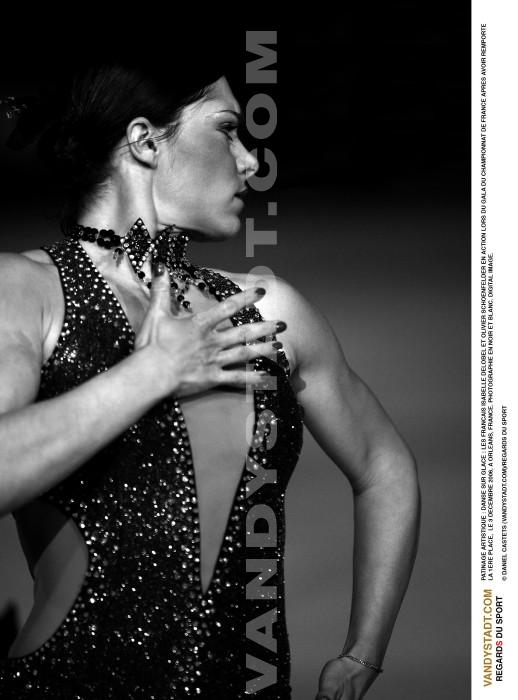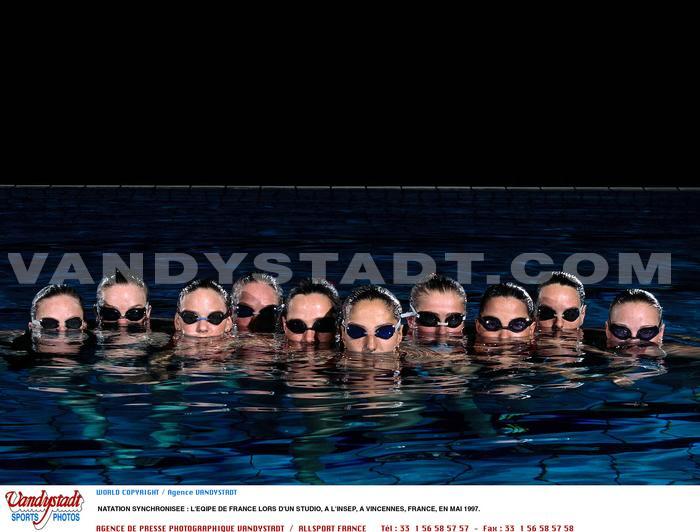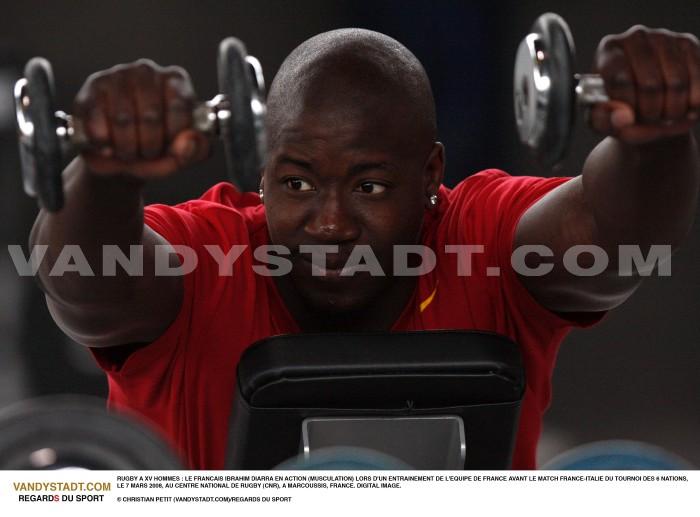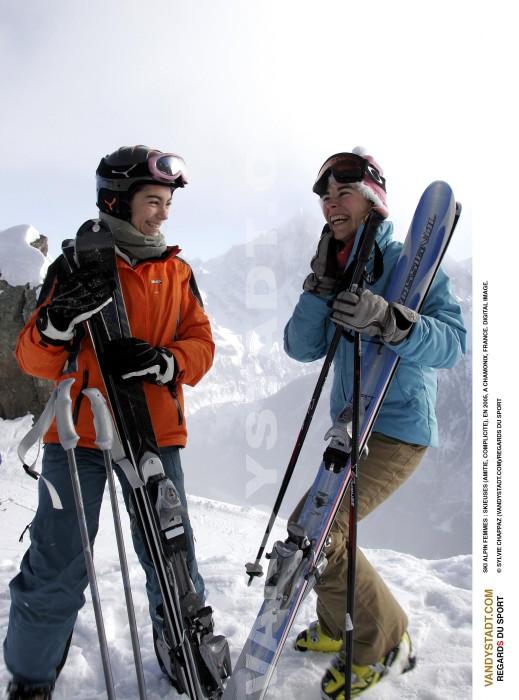Equitation - Equestrian history
Equestrian - Olympic Sports
![]()
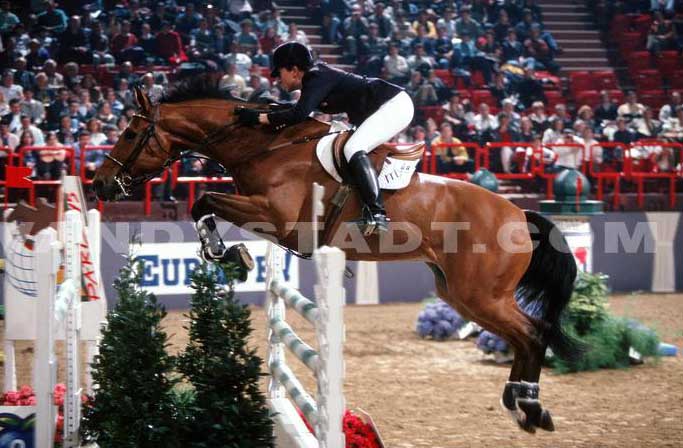
At all times, the horse was the companion of man in fighting sports (jousting, tournaments, contests, etc..), To hunt, to watch the flocks or to make war. The Persians were playing polo vintage 600 BC, C! Chariot races were held at the Olympic Games of ancient Greece.
History
The first manual of horsemanship (the Equestrian Art) dates from about 400 BC, written by Xenophon (430-355 BC, C) for the Greek cavalry. In the 16th century, the illustrious groom Neapolitan Giovanni Pignatelli taught horsemanship to cavalry officers. At the same time in 1532, Frederico Grisone relaunch the Academy of Naples, it opens the way for the development of riding smoothly based on the attitude of the head and neck (the 'return'). In the seventeenth century, Antoine de Pluvinel, illustrates the squire of Louis XIII created the French Riding School by the ideas of Grisons. The first book on the cavalry is written in 1733 by the "father of the French riding, François Robichon of Guérinière (1688-1751), the squire of Louis XV. His theories are still in force at the Spanish Riding School of Vienna founded in 1572.
The horse show is directly descended from hunting with hounds. At the time, competitions were held in Ireland by the famous 'Royal Dublin Society' aimed to test and selection of horses able to cross all sorts of obstacles that might be encountered during a hunt. In the nineteenth century appearance of the first contest of "jumping" to retain the best riders in show jumping.
The Federation Equestre Internationale was founded in 1921 on the initiative of ten national equestrian organizations. It has 130 member countries.
The French Equestrian Federation was created in 1921 (550 000 graduates in 2008).
Riding and Olympism
Show jumping became an Olympic sport in 1900 at the Paris Olympics, while training and competitions are on the Olympic program in 1912 with events in
iduelles and team.

Competition
By riding, it means: equestrian sports, but also riding on ponies and equestrian tourism.
There are three Olympic disciplines: Jumping, Dressage and Eventing. But there are also: Driving, Endurance, Aerobatics, the Horse-Ball, Monte in the Amazon, the Hunter, equestrian and outdoor activities such as playing Pony-games.
The equestrian sport is one of the few sports where men and women compete equally and where men and animals are a team. Horsemen and women competing together since 1974. The first rider world champion was the Canadian Gail Greenough in 1986 with Mister T.
Did you know that the 5th century, Byzantines discovered saddle, stirrups and irons (replacing hipposandale leather)?
Key Dates
- 1860 The endurance races were held in France, Austria, Germany and Norway. They were for distances of 50 km or more, and were organized by the armies of these countries. One of the most remarkable was the Vienna-Berlin race in 1892 in which 121 officers took part on a distance of 630 km.
- 1865 Foundation of the French Society Equine who organized her first horse show in 1866.
- 1868 The Royal Dublin Society includes for the first time in its program of its annual horse show, two tests of jumping, high jump and long jump, both directly inspired by the Irish passion for hunting fox.
- 1872 At a competition in Bratislava in the Austro-Hungarian Empire, was given a demonstration of what could perform well trained horses.
- 1881 The Equestrian Club Royal de Belgique, founded in 1877, organized its first horse show.
The first international competition was held in Paris in 1900, in Barcelona in 1902, in Brussels in 1905. First Cup of Nations were held in San Sebastian and in London in 1906. Also in 1909 took place the first international competition in Lucerne, Lisbon and New York.
- 1953 First World Championship Show Jumping won by Spaniard Francisco Goyoaga
- 1966 First World Championship Dressage won by the German Josef Neckermann and first World Championship of Eventing won by the Argentinian Carlos Moratorio.
- 2006 First World Championship dressage two categories: Freestyle and Grand Prix Special (compulsory figures)
Dressage
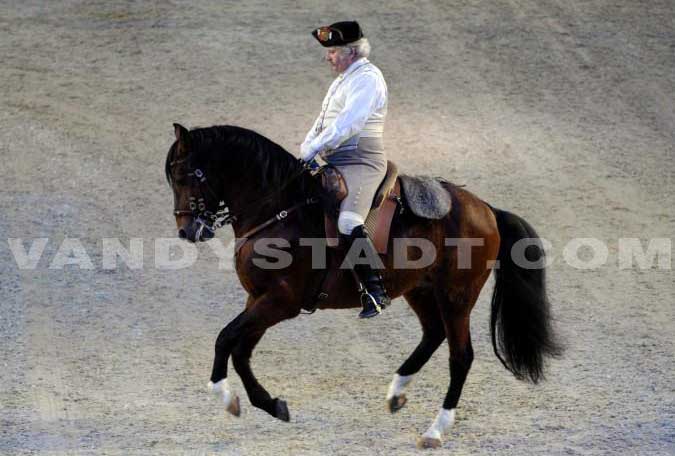
The dressing is inspired maneuvers performed on battlefields by the European cavalry.
It is a story of a couple, elegance, natural balance of the horse and harmony and perfect understanding between horse and rider. The horse must perform precise movements responding to discrete signals transmitted by its rider.
In major competitions, the training consists of three rounds in four days. The horse and rider perform a series of twenty compulsory figures (spins, piaffers, passages, not trot or gallop) in the first two innings. In the third inning, the freestyle, horse and rider perform a choreography to music.
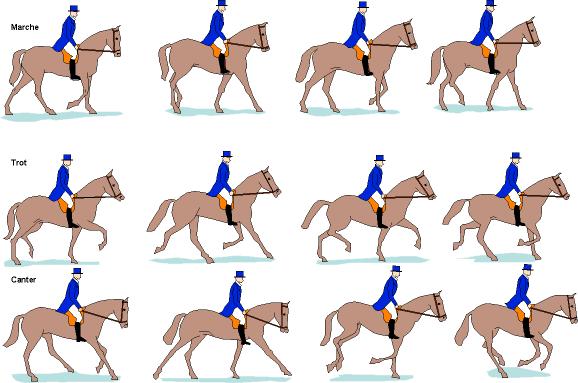
It comprises dressage:
- Four steps: collected, medium, long and free.
- Four types of trot and gallop together, working, medium and long.
- Three paces, we judge figures such as halting, half-stop, change direction, the back and transitions.
Other figures who receive the notes are volte, serpentine, figure eight, the side step (transfer to the leg, shoulder-in ...), the spin and half-pirouette, the prancing, the support and passage.
The event takes place on a field of 60 x 20 meters, perfectly flat ground homogeneous and flexible. Letters along the trail and provide a benchmark for the performance figures. Serpentine, support, passage, piaffe, each figure is rated by a panel of 3 judges placed around the quarry. Notes are given to all horse and rider at the end of recovery.
Voted best dressage rider in the 20th Century: Reiner Klimke ALL
Voted best dressage horse of the 20th Century: Rembrandt Nicole Uphoff ALL.
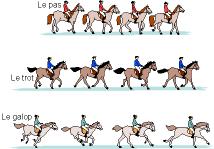
The School of Saumur Black Frame, with riders dressed in black with Baques hairdressing 'lantern' was created in 1814 by Louis XVIII. Military institution until 1972, now offers splendid demonstrations of horsemanship. Women were admitted since 1984. Jean-Pierre Blanco , a member of the Frame Black, became champion of France of eventing in 1997.
The other great school is riding the "Spanish School of Vienna in Austria, with its famous white horses, the Lippizaner without forgetting the Royal Andalusian School Jerez and Portuguese.
Jumping
It originated in Ireland in fox hunting.
Olympic sport, also known as Jumping, competitions for jumping are to overcome as much as possible without overthrowing a specified number of obstacles colors and shapes (fifteen medalist), composed of mobile elements ( oxer, ditches, walls, triple bars) whose height and width depends on the level of riders and horses. There are penalties if the jumps are not made in good order, where time limits are exceeded or when the horse refuses to cross the barrier or the reverse.

The course
The total length of the route in meters does not exceed the number of obstacles multiplied by 60. In general, it is between 700 and 1000 m and includes a number of obstacles 12 to 15 including up to 3 combinations. With the exception of tests or power jump, obstacles should not exceed 1.70 m in height (average 1.60m), while their width should not exceed 2 m, except the triple bar, or spa, which can measure up to 2.20 m. Rivers can not exceed 4.50 m wide.

The 3 Grand Prix's most prestigious show jumping are:
- The GP of Aix-la-Chapelle in Germany
- The GP of Hickstead in England
- The GP of Calgary in Canada.
Voted best rider jumping the 20th century Federico Caprilli, an officer in the Italian cavalry and pioneer of the famous art of jumping (killed in a jumping accident in 1907).
Voted best horse jumping the 20th century: Milton, the famous white horse of John Whitaker GBR.
The world record high jump is owned by the Chilean captain Alberto Larraguibel who has taken a spa barrier of 2.47 m in 1949 with his horse Huaso 15 years, a thoroughbred 1m68, in Vina del Mar in Chile.
The world record long jump is 8.40 meters, held by South African Andre Ferreira since 1975 with his horse Something
.jpeg)
Global Champions Tour
Designed by renowned horseman, Dutchman Jan Tops .
Inaugurated in 2007 under the patronage of Athina Onassis de Miranda (granddaughter of the wealthy Greek shipowner Aristotle Onassis and wife of the Brazilian rider Alvaro Miranda ), the circuit of the lucrative Champions Tour includes eight contests jumping spread over three continents: Palm Beach, Cannes, Monte Carlo, Estoril, Sao Paulo, Valkenswaard, Arezzo and Athens.
Eventing
Olympic sport since 1912, eventing is a probation dramatic physical and sports rider and his horse: calm for dressage - endurance for the cross and adroit in jumping.
Eventing was created to test officers' horses and included various events such as dressage, endurance, steeplechase, cross-country and show jumping. The French army created in 1902 Championship Horse Arms to try its riders.
Until 1939, the national championship eventing called 'Championship Horse weapon', organized exclusively for officers of the mounted weapons.
Until 1949, the eventing at the international level was reserved for the military.
The competition combines three events taking place over three days: Dressage on the first day, endurance the 2nd and the 3rd horse show day.
- Dressage
Imposed with a recovery in total: twenty figures (excluding piaffers, passages, pirouettes in canter) to run in eight minutes. Four out of ten scores assessing gait, impulsion, submission of the horse and the rider's position. The note was converted into penalty points.
- The bottom (steeplechase and cross)
Perhaps the most challenging and most dramatic events: route alignment through the campaign (up to 26 km) with fixed obstacles and natural (about 27 natural obstacles for a total of 35 efforts with combinations). Riders must complete a course of about 6 000 m in a maximum time of ten minutes on a base of 570 meters per minute or 34 km / h. A first refusal at an obstacle costs 20 points, second 40 points and the third is eliminated. The fall is also eliminated. Every second beyond the time allowed costs 0.4 points.
- Jumping
Last test, it tests the quality of recovery, address, speed, flexibility of the horse after intense efforts provided the cross during the day. The term generally includes 12 obstacles with a maximum height of 1.25 m against 1.70 m in the contest jumping. Time: 77 to 88 seconds. A bar and dropped the first refusal cost 4 points. The second refusal and fall are the playoffs.
Veterinary visits are mandatory prior to each event. After the last test before the skiing and jumping is the hardest. Some even called the 4th test can result because the removal of top riders classification.
Voted best eventing rider of the 20th century: Mark Todd NZE.
Voted best eventing horses in the 20th century: Marcroix, the French horse of another great champion, the Dutchman Charles Pahud de Mortanges.
What makes a difference eventing ranked from one to four stars:
- In a contest of a star, the cross is 4 160 m maximum and barriers have a maximum height of 1.15m (journey time: 78 seconds maximum);
- A term of four stars, the cross term is 7 410 m maximum, the barriers to measuring 1m25 (journey time: 96 seconds maximum).
The three most difficult competition of eventing competitions are Badminton and Burghley in England and Lexington in the United States. The competition's most prestigious of the three is that of Badminton created in 1949 by the Duke of Beaufort. Two riders have completed the grand slam, that is to say, winning all three competitions: the British rider Pippa Furnell and Australian Andrew Hoy .
Other competitions to 4 stars: Lühmühlen in Germany, Adelaide in Australia since 2007 and Pau in France.
Established in 2008, the HSBC FEI Classics is a ranking of eventing which takes into account the five 'four star' of the season: Lexington, Lühmühlen, Burgley, Badminton and Pau.
Other disciplines of equestrian sports:
Aerobatics : Sport flexibility and momentum of having much in common with figure skating and gymnastics, adopting the system of compulsory and free programs in which the outfield give free rein to their imagination, their virtuosity and artistry, through static or dynamic figures. Recognized in 1993 by the Federation Equestre Internationale, it is integrated within the French Federation since 1985.

The coupling : 1 horse, 2 horses, 4 horses. This is a test presentation and dressage, which allows to judge, first quality and condition of horses and carriages and secondly, the quiet, the pulse and the regularity of the gaits horses.

The raid equestrian endurance : A discipline outside, the clock is running on a route imposed with strict veterinary controls, during and after the test. The distance varies from 20, 40, 60, 90, 130 or 160 miles in a single day or two times 100 km in two days.
24 hours on horseback! The world record was beaten in 1999 in Budapest by the Hungarian Miklos Pinter. He traveled 486 km in 24 hours on a circuit of 10 km in the amount 24 horses. The previous record belonged to 483 km from 1860 to the American William Cody aka Buffalo Bill.
The horse-ball Two teams of 4 riders compete in a passing game (at least 3 before you can shoot at goal), attacks and defenses, never dismount, a balloon with 6 loops of leather to mark the maximum points by sending in goals at 3.50 m in height, placed at each end of a rectangular field of 65 mx 25 m.
Reining : Born on the ranches of the United States, the reining allowed to escort, monitor and sort the animals efficiently and quickly. From there was born a clean dressing to highlight the qualities of availability, ease and maneuverability of the horse western. A circuit competition was introduced in France, Europe, and internationally. Reining is part of the world championships since 2002.
Polo
Coupe du Monde . L'Argentine, championne olympique en 1924 et 1936, fait partie des grandes spécialistes. Le polo se pratique sur un terrain de gazon de 275 m de long et 145 m de large avec un but à chaque extrémité. Deux équipes de 4 cavaliers s?affrontent pour marquer le plus grand nombre de buts en frappant avec un maillet de bambou (1,22 à 1,35 cm selon la taille du cheval), la balle de saule ou de plastique (99 à 128 gr, circ. 7,6 à 8,9 cm). La partie se joue en 4, 5, 6 ou 8 périodes de 7 minutes 30. La durée maximale est de 60 minutes. Les cavaliers changent de chevaux entre chaque période." style="display: inline;">"King of Sports, Sport of Kings", Polo, discipline rather elitist, is one of the oldest sports practiced in the world. It originated in Persia ca. 600 BC. The first polo club was founded by the British in 1859 to Silchar in India. At the same time, settlers have become known in Argentina. The first regulations were codified by the Hurlingham Club in London. The International Federation, based in Beverly Hills, was founded in 1983. It organizes the World Cup. Argentina, Olympic champion in 1924 and 1936, is among the leading experts. The polo is played on a grass field 275 m long and 145 m wide with a goal at each end. Two teams of 4 riders compete to score as many goals by hitting a bamboo mallet (1.22 to 1.35 cm depending on the size of the horse), the ball of willow or plastic (99 to 128 gr, circ. 7.6 to 8.9 cm). The game is played in 4, 5, 6 or 8 periods of 7 minutes 30. The maximum duration is 60 minutes. The riders change horses between each period.
Disabilities ranging from -2 to +10 is assigned to players to level the playing teams. The team handicap is the total handicaps of its riders.
Glossary
Jumping
The vertical: the obstacles on a single plane.
The oxer: barriers on two levels with the bar at lower or two bars at the same height.
The double: A combination of two obstacles.
The triple: combination of three obstacles (three oxer etc..,). One per term.
Dressage
Supported: trot or gallop move to the side keeping the preceding and following the same
cadence.
Change of foot start galloping successive alternating right then left.
Doubles: combination of two obstacles.
Eight figure: developed by Dominique d'Esme. Movement difficult and risky (comparable to the quadruple jump in figure skating). The horse must continuously make changes up simultaneous leaning right on the first loop of 8 and then leaning to the left for the second loop. An unnatural position for the horse (a horse galloping freely on the left foot during a left curve).
Oxer: barriers on two levels with the bar at lower or two bars at the same height.
Passage: trot together with a sustained suspension time when rising earlier.
Piaffe the horse trots in place raising strongly diagonally opposite limbs.
Pirouette: the horse runs on its hips.
Pirouette reversed hips rotate around the shoulders.
Compile: compile the horse itself to release the weight. The center of gravity should be brought back with the neck and head to the reduced vertical. With the balance on a limited space the horse may go up and get air.
Reversals: Running a series of compulsory or not (42, 46 or 48 at the trials) in order and on a surface determined. There are many types of occasions, each with their difficulties. Among the various occasions we note:
Grand Prix (compared with the short program of figure skating): sequence of movements and figures and it imposed a definite order (elongation, gallop, change of foot, shoulder cons, spin).
Grand Special Prize: The Grand Prix program with many transitions as the passage or trot-trot transition.
Kür: Freestyle music with all the figures of Grand Prix which will last between 5'30 and 6 '. The sequence and choreography are developed by the rider on the music of their choice. Are also allowed in this program: double pirouettes, pirouettes in piaffe, changes on foot of the circles and figure eight. The Kür was introduced for the first time the Atlanta Olympics in 1996.
Spa: Triple Bar.
Triples: A combination of three obstacles. One per term.
Vertical: obstacles to a single plane.
Copyright Sportquick/Promedi











